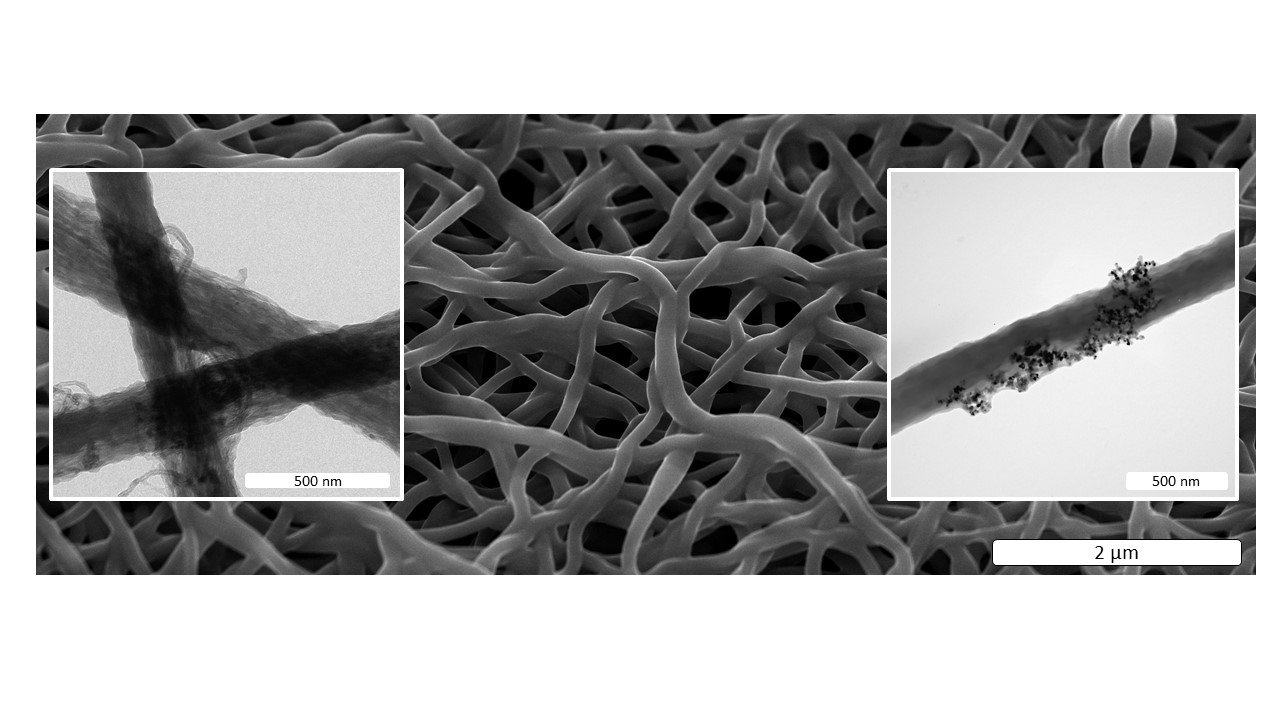Polymers and particles for electrode and energy storage applications
We synthesize tailor-made polymers for the production of carbon fibers, whereby we also consider large-scale applicability at an early stage of development. This means that we use commodity monomer building blocks for the synthesis of polymers that are available on a large scale and at low cost. The polymers receive their special functionality through their hierarchical structure. New processing methods are developed so that the polymers become porous upon conversion into carbon fibers. The resulting materials exhibit large surface area and improved electrical capacity. Classically, polymer fibres are converted into carbon fibres in high-temperature processes. We rely on alternative conversion processes that are less energy-intensive and fast (or even instantaneous). We add nanoparticles to the polymer fibers, which absorb either infrared laser light or microwave radiation and convert these into heat. This allows high temperatures to be generated within the fiber, resulting in conversion to carbon fibers without loss of energy.

D. Go, M. Opitz, P. Lott, K. Rahimi, J. Stollenwerk, H. Thomas, M. Moeller, B. Roling, A. J. C. Kuehne, “Electrochemical characterization of laser-carbonized polyacrylonitrile nanofiber non-wovens”, 2018, 135, 46398.
M. Opitz, D. Go, P. Lott, S. Müller, J. Stollenwerk, A. J. C. Kuehne, B. Roling, “On the interplay of morphology and electronic conductivity of carbon fiber mats for supercapacitor applications”, Journal of Applied Physics 2017, 122, 105104.
D. Go, A. Juràskovà, A. Hoffmann, G. Kapiti, A. J. C. Kuehne, “Deep-Blue Fluorescent Particles via Microwave Heating of Polyacrylonitrile Dispersions”, Macromolecular Rapid Communications 2017, 38, 1600775.
D. Go, P. Lott, J. Stollenwerk, H. Thomas, M. Moeller, A. J. C. Kuehne, “Laser Carbonization of PAN-Nanofiber Mats with Enhanced Surface Area and Porosity”, ACS Applied Materials & Interfaces 2016, 8, 28412–28417.
